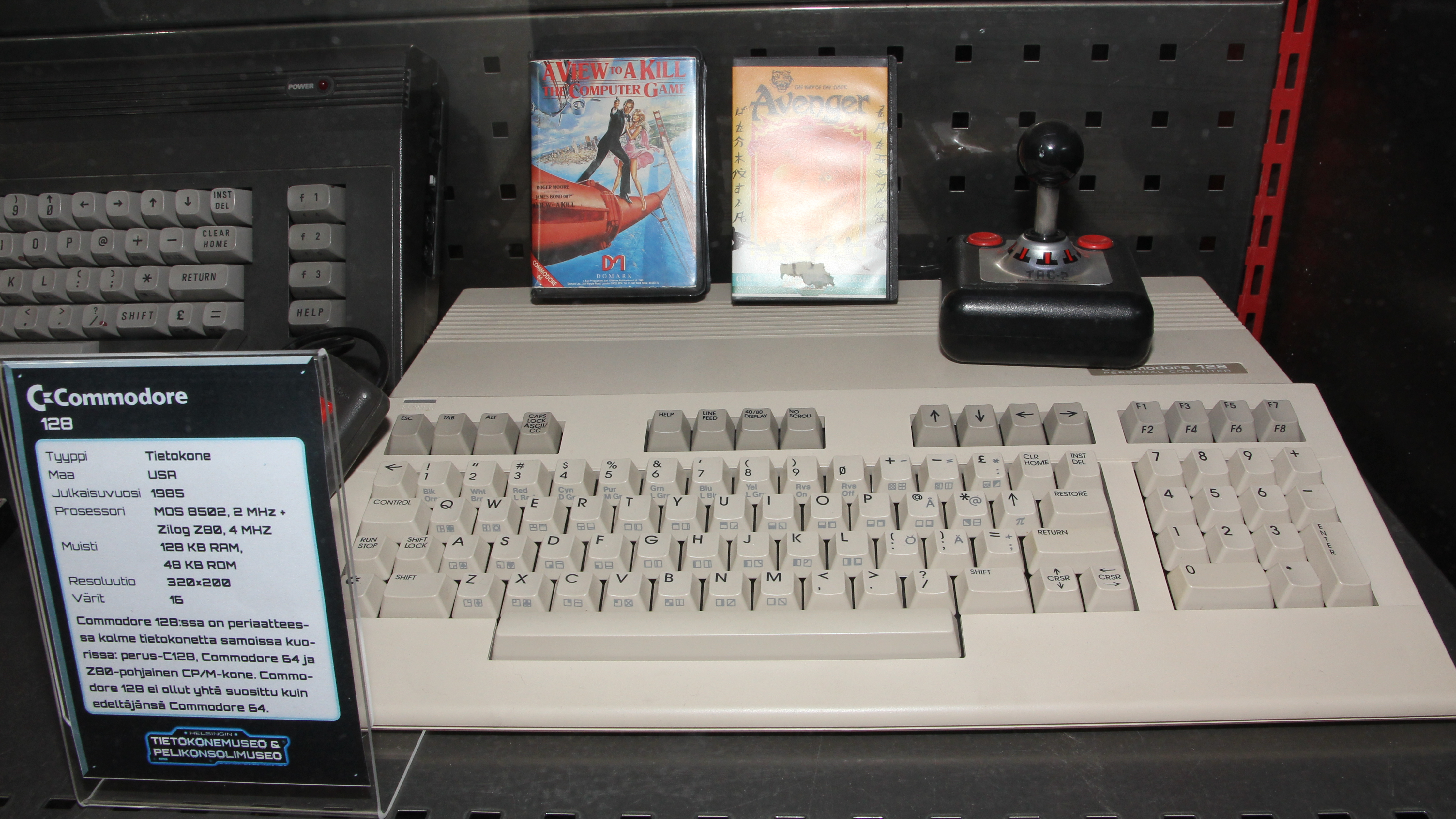CES 2025 is the 40th anniversary of the Commodore 128 — the last 8-bit PC first appeared at CES 1985
An excellent software-compatible C64 upgrade — but too late considering Intel 8086's release in 1978.

This week at CES 2025, numerous major hardware announcements are being unveiled — but in the long history of CES, these events also echo the bygone era of Commodore announcements at CES, particularly the Commodore 128 announcement at CES 1985. The Commodore 128 was a direct follow-up to C64 that only ever sold a few million units versus the C64's mighty estimated peak of 17 million units. By the time Commodore 128 launched, it was the last 8-bit PC in an era of 16-bit PCs, thanks to the existence of Intel 8086.
Fortunately, the existence of 16-bit PCs didn't completely nullify the meaning of the Commodore 128 when it was unveiled in January 1985 at CES. Intel 8086 had been released back in June of 1978, so 16-bit had plenty of time to make its presence known on the market — but seeing as the original 8-bit C64 had launched in 1981, surely that could mean a still-feasible 8-bit Commodore 128, right?
Unfortunately, the answer to that one ended up being a resounding "No". The reason for this was actually pretty simple — while other PCs and PC clones of the time were opening the doors to new 16-bit and 32-bit software, the Commodore 128 was mostly just an enhanced Commodore 64, with twice the RAM (128K from 64K) and a CPU that could boost up to 2MHz instead of just 1MHz. Actual support for C128 in the form of new software or patches to utilize its faster speed and increased RAM was fairly rare compared to the thriving software support the original C64D enjoyed, and the Commodore 128 was eventually doomed to be forgotten — though it, the 128D, and the 128DCR all still exist as just-better versions of Commodore 64 for enthusiasts and collectors. Perhaps that one bakery would appreciate one of these... retro gaming enthusiasts certainly might, since games enhanced for Commodore 128 get improved graphics and feature support, including the addition of music into the classic Origin System RPG Ultima V.
Another often overlooked highlight of the Commodore 128 can be found in its dual graphics chips, which could allow it to be used for dual monitors at a time when such a feature was extremely rare, as pointed out by Heise.de's coverage of this 40th anniversary. While the two graphics chips used were obviously fairly limited in supported resolution and color output by today's standard, such a feature being available in any affordable form back in the 80s was quite impressive.
Ultimately, the Commodore 128 and its models end up being something of a footnote in the legacy of the Commodore 64, like most of its variations. But while the machine wasn't considered particularly ambitious in a time where everyone else was chasing 16-bit and 32-bit, the supposed peak of 8-bit impresses with a version of the Commodore 64 (still one of the most popular computers ever made) that is just better in every way, some manual compatibility mode-toggling requirements aside.
Get Tom's Hardware's best news and in-depth reviews, straight to your inbox.

Christopher Harper has been a successful freelance tech writer specializing in PC hardware and gaming since 2015, and ghostwrote for various B2B clients in High School before that. Outside of work, Christopher is best known to friends and rivals as an active competitive player in various eSports (particularly fighting games and arena shooters) and a purveyor of music ranging from Jimi Hendrix to Killer Mike to the Sonic Adventure 2 soundtrack.
-
bit_user If you compare the launch prices of the IBM PC and C64, the IBM cost almost 3x as much! According to Wikipedia, the IBM PC launched in Aug. 1981 at $1565, while the C64 launched in Aug. 1982 at $595.Reply
Part of the C64 and Apple II's advantage was that they used an ordinary TV, for a display terminal. I'm sure this was a great trick for saving some money. -
sparrow2 " and a CPU that could boost up to 2MHz instead of just 1MHz"Reply
You forget that it also have a 4MHz Z80, so it could run CP/M, without that you would not even call it a PC! -
ezst036 Ah, the good old days when a computer and its operating system didn't come with factory-standard spyware and advertisement delivery.Reply -
dontlistentome It shows the downside of being backwards compatible. Why would you develop software for the 128 and lose all those C64 owners as customers. Instead, you could develop C64 software and sell it to C64 owners AND C128 owners. That of course means less software for C128 which means lower sales, which means less software for C128 which means it's in a death spiral.Reply -
ezst036 Reply
That explains Sony's failed Playstation 2 and also 3.dontlistentome said:It shows the downside of being backwards compatible. Why would you develop software for the 128 and lose all those C64 owners as customers. Instead, you could develop C64 software and sell it to C64 owners AND C128 owners. That of course means less software for C128 which means lower sales, which means less software for C128 which means it's in a death spiral.
A little more serious though, given the sluggish sales of the 128 is the only way this works. -
bluvg Reply
Indeed... monitors were pretty expensive back then (relatively speaking), and the output resolution was so low, a TV did a good enough job (don't forget the little switch box to connect from the RF modulator to the antenna inputs). I bought my C64 for $99, I think from Sears or JC Penney, and I think the C128 was double that. Didn't know until I read this post that the C128 could drive dual displays, though! That's just amazing given how resource-limited these machines were.bit_user said:Part of the C64 and Apple II's advantage was that they used an ordinary TV, for a display terminal. I'm sure this was a great trick for saving some money. -
kyzarvs Last? The SAM Coupe (based on the Spectrum) was released in '89. I don't know if there was another later than that.Reply -
das_stig Is the Apple IIe discontinued 1994 the true last 8-bit, yes we have new 8-bit that are clones or emulate old tech and single board computers, but these just don't feel like natural successors.Reply -
Joseph_138 Reply
It was discontinued in 1994, but was introduced in 1983. When you're talking about the last 8-bit computer, you're talking about the last to market, not one that hung around way past it's expiration date.das_stig said:Is the Apple IIe discontinued 1994 the true last 8-bit, yes we have new 8-bit that are clones or emulate old tech and single board computers, but these just don't feel like natural successors.
